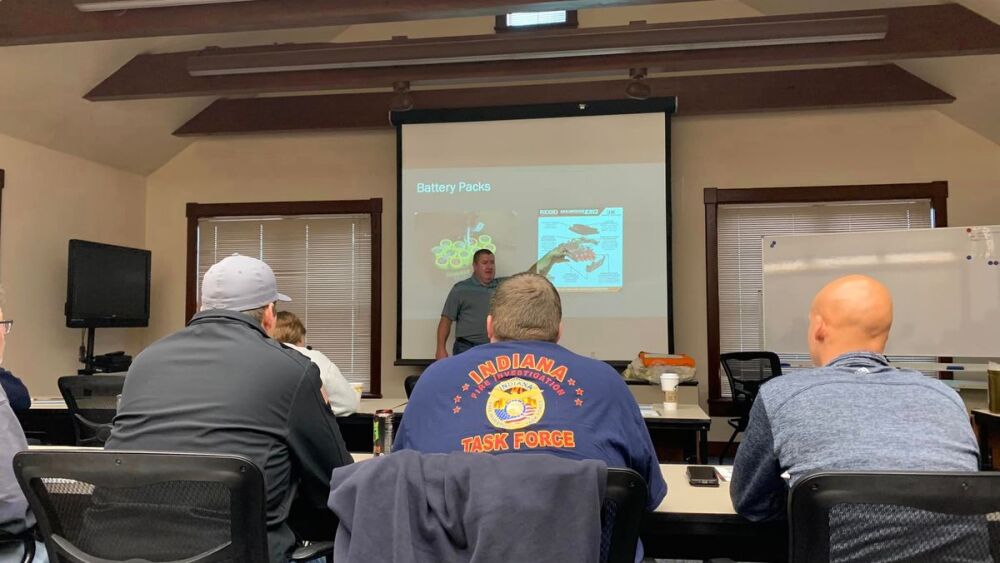By Berlin Maza
In fire and EMS, we pride ourselves on using technical decision-making to take action. But when it comes to teaching the craft, the question we must ask ourselves is this: Do we really know how to teach? Not just drill, not just demonstrate, but teach in a way that enables others to learn and perform under pressure.
Firefighters are teachers
We may not realize it, but every day we’re shaping the next generation. Whether you are teaching at the academy, mentoring a rookie or simply helping another firefighter, you are passing down the craft. But here’s the hard truth: If you don’t know how to teach, are you preparing them for success or setting them up to fail?
| SPECIAL REPORT: What Firefighters Want in 2025
Legendary basketball coach John Wooden once said, “You haven’t taught until they have learned” (Nater, S., & Gallimore, R., 2010). That single line transformed how I approach training. In our world, failure to learn can cost someone their life. Teaching is one of the greatest opportunities we have as firefighters. It is a privilege, and it is our responsibility to master this skill.
The problem: Assuming experience equals teaching skill
In many departments, instructors are chosen based on seniority, rank or technical ability. While those factors are valuable, they don’t guarantee teaching skill. You can be the most technically proficient firefighter, paramedic or officer, but that doesn’t mean you can communicate effectively, break down complex concepts or recognize when a student isn’t getting it.
What separates a competent instructor from a highly effective one is the ability to connect with their students. The best instructors don’t just speak, they engage. They inspire curiosity, not just compliance. They create an environment where learning is active and where students are encouraged to ask questions, test ideas, make mistakes and grow from them without fear of embarrassment or punishment.
When newer firefighters struggle during drills, how often do we chalk it up to laziness or lack of aptitude? As an instructor, the harder questions to ask are: “Did they actually learn?” and “Did I give them the time, resources and guidance to succeed?”
How many firefighters do you know who have received formal training on how people learn, how to teach adults or how to adjust their teaching style to fit the learner? We’ve invested thousands of hours in mastering technical skills — deploying hose, throwing ground ladders, performing EMS skills — but almost none developing instructional skill. That gap is dangerous.
My experience: Learning to teach the hard way
Early in my career, I ran training the way training was delivered to me — lecture, demonstrate, run scenarios, critique outcomes. It took a long time — and several frustrated recruits — before I realized I wasn’t actually teaching, I was testing. After watching a firefighter perform a new skill below standard, I found myself formally counseling them even though they had only practiced the skill a few times. I wasn’t correcting behavior; I was undermining the learning process. If we want to build competence and confidence in others, we have to stop treating mistakes as failures and start seeing them as part of the process.
Todd Conklin, a leading voice in human and organizational performance, emphasizes that error tolerance is essential in high-risk, high-consequence industries. He argues that human error is inevitable, and that we as instructors must be trained to tolerate those errors (Conklin, 2019). That’s what real teaching is — guiding someone through the messy middle until they get it right, and then helping them do it again until they can’t get it wrong.
I began studying leadership and education theory. Concepts such as adult learning theory, adaptive leadership and equity work gave me tools I never knew I needed. When I applied these concepts in my teaching, students became more engaged, asked more questions, showed more buy-in and gained more confidence.
I don’t share this to impress; I share it to challenge. If we want to lead, we have to learn. If we want to train, we must become students of instruction.
Action item: Become a student of teaching
So, what qualifies you to teach? If you’ve never studied how adults learn or how to assess student understanding, it’s time to take that step. Don’t settle for being a presenter or a drill facilitator. Strive to be an educator.
Here’s where to start:
- Reflect: Understand that just because you are a training officer or in a position to train others, you may not be effective at training or teaching — yet. Being in the role doesn’t make you successful; learning how to teach does.
- Commit: Take instructor development seriously. Go beyond the standard Fire Instructor I course. Attend workshops, read about teaching techniques, seek mentorship and learn what the most effective instructors out there are doing. Remember, learning should be the goal, not teaching.
- Study: Study adult learning theory. Understand how experience, emotion and environment affect retention and performance.
- Take ownership: As an instructor, it’s your responsibility to present information and ensure your students can understand it, retain it and apply it under pressure. That starts with seeking feedback. Ask your students what made sense, what didn’t and what needs more clarity. In the book “Extreme Ownership,” Jocko Willink and Leif Babin drive the point home: “There are no bad teams, only bad leaders.” If your students aren’t grasping the material, that’s your failure, not theirs. You didn’t teach the material in a way they could absorb. As Willink explains it, true leaders own everything in their world. No blame. No excuses. You adjust. You clarify. You find a better way — because their success is your responsibility (Willink & Babin, 2015).
- Embrace humility: Teaching is hard — and it should be hard. Teaching isn’t for everyone, and instructors fail just as students do. What matters is how you grow.
Teaching is leadership
Training goes far beyond the sharing of information; it’s about creating opportunities for others to learn and build confidence. So the next time you run a drill or lead a classroom, ask yourself: “Did they learn?” Because if they didn’t, then you didn’t teach. And in our line of work, that’s not just a missed opportunity, it’s a critical failure.
Recommended reading
- Conklin, T. E. (2019). “The 5 Principles of Human Performance: A Contemporary Update of the Building Blocks of Human Performance for the New View of Safety.” PreAccident Media.
- Willink, J., & Babin, L. (2015). “Extreme Ownership: How U.S. Navy SEALs Lead and Win.” St. Martin’s Press.
- Nater, S., & Gallimore, R. (2010). “You Haven’t Taught Until They Have Learned: John Wooden’s Teaching Principles and Practices.” Fitness Information Technology.
ABOUT THE AUTHOR
Berlin Maza is a captain with Eastside Fire & Rescue in Issaquah, Washington. Captain Maza served in the training division for several years as an engineer training officer, recruit academy instructor and EMS lieutenant. He continues to teach at recruit fire and EMT academies and hosts the podcast Leadership Conversations @ the Kitchen Table. Maza holds a master’s degree in emergency services management and an MBA in finance from Columbia Southern University. He is currently studying for a doctorate in strategic leadership at Liberty University.




